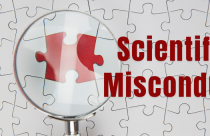How Rare is Scientific Misconduct?

Assessing how rare scientific misconduct might be within the broader scientific research community would be virtually impossible. A scientific misconduct cannot be identified until it has been discovered. There are several cases of scientific misconduct that go unnoticed as they never get discovered. Let us study some more about scientific misconduct that is going on in the academic research community.
Misplaced Confidence in Science?
Scientific misconduct is not intentional. It depends on several factors, one of them being the sample size. Any attempt to extrapolate data from a small sample size may be equally misleading. This is because you would be assuming that your sample would stand up to scrutiny as being representative of the larger population of research studies. Re-examining every piece of research would be a herculean task and could only be justified on evidence of a growing problem.
The profession of scientific research has always assumed that the principles of good research practice were a given, such that research results can be trusted until given cause to think otherwise. The weakness in that argument is that by the time you get such a cause, it may already be too late! Cases of scientific misconduct shake the platform of confidence that researchers have within each other.
In Search of the Best Misconduct
In October 2012, the Proceedings of the National Academy of Sciences (PNAS) in the UK published a study of 2,047 research papers on the PubMed database. These papers were the retracted ones from biomedical and life sciences literature. This could identify the cases of scientific misconduct versus that of human error.
It was found that researcher misconduct accounted for more than two-thirds of the retractions.
One of the co-authors of the study, Dr. Arturo Dasadevall, lamented that their findings only represented a conservative estimate of the true scale of scientific misconduct:
“The better the counterfeit, the less likely you are to find it – whatever we show, it is an underestimate.”
Just the Tip of the Iceberg?
The PNAS study also suggested that the long-term trend of scientific misconduct seemed to show an upswing. It reported only three retractions for misconduct out of 309,000 papers (0.00097%) compared to as many as 83 retractions for misconduct out of 867,700 in 2007 (0.0096%).
An apparent ten-fold increase in two decades is the kind of headline that gets attention, but many in the scientific research community are concerned that the actual rate is even higher. They fear that the full picture is being withheld by academic journal editors by virtue of their refusal to disclose complete information in retraction notices.
A Call For Transparency
When you consider the amount of money now involved in scientific research and the enormous consequences that can occur when flawed research is added to the body of knowledge, the current paranoia over retractions is understandable.
However, the retraction process in academic publishing is still very disorganized. Instead of helping reduce scientific misconduct, it only degrades the situation.
Retraction notices are deliberately opaque as a result of both the preoccupation with reputation and the constant threat of litigation. As a result, there is no way of knowing whether the problem is simple human error (sloppy research) or more deliberate misconduct.
The increasing media attention given to scientific misconduct now prompts an assumption that every retraction is due to misconduct, which is inaccurate.
If journal editors are so concerned about reputation, perhaps greater transparency on the reason behind the retraction might help the entire scientific community. It would help to get a grip on the frequency of research mistakes as well as the frequency of misconduct so that responses can be developed. Such a commitment, if possible, would be beneficial to the broader community.
The above, of course, sounds great on paper, but its implementation would be difficult in a community. Especially, where disagreements over the validity of statistical analysis have persisted for decades, the likelihood of heated debates and possible litigation over alleged intent in a specific choice of analysis will prove to be a barrier to transparency for some time to come.
At present when there are so many cases of scientific misconduct coming into light, what is your view about them? Please share your thoughts in the comments section below.









